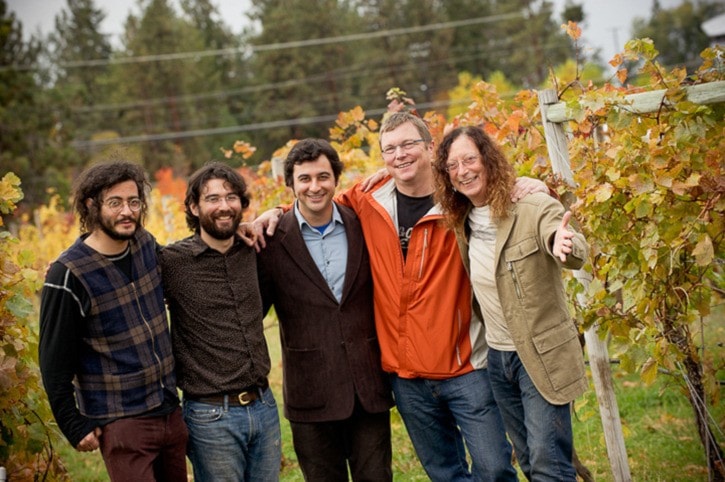Summerhill Pyramid Winery continues to harvest medals and awards for its sparkling wine. Recently, CEO Ezra Cipes announced the winery was awarded a gold medal for its Cipes Rose. From where? No less than the 2013 Effervescents du Monde competition in France, in which it was also included in the top 10 best sparkling wines in the competition.
Earlier in the fall, I had the pleasure of sitting down with Summerhill founder Stephen Cipes. I wanted to learn about how he had created a vision of becoming a world-class sparkling wine producer in an area that had a reputation for producing plonk wine, typically sold in gallon bottles. It was in the late 1980s and the B.C. wine revolution was only just getting underway.
Without further comment, I present some of what I learned from Cipes, in his own words:
“Cheers with a sparkling pinot noir that was grown on this property and won a gold medal in San Francisco.
“I guess this takes us back to my passion that I shared with my co-founder Eric (Von Krosigk) back in the late ’80s. We bought this farm in ’86. It was planted to table grapes and hybrids. We did have some of the first vinifera that was ever brought in — the Riesling patch was a Professor Becker project in 1976. But that was only a few rows.
“My type of wine has always been sparkling wine. Since I was a boy drinking beer and Riunite, I always liked sparkling wine.
“I got very excited about the growing conditions here because it was pointed out to me by Jack Davies of Calistoga, which is in the Napa Valley. He made sparkling wine and he sourced his grapes from all over the word. He took the clones and planted them there in the Napa Valley and his wine, Schramsberg, was served at the White House. It was the pride of the United States. He and his winemaker Alan Tanscher came up in 1990. He said, ‘Steve, you guys are wasting your time making table wine. You have the absolute perfect conditions for making sparkling wine here because you are so far north that you have the late evening sun and early morning sun and the plants shut down in the middle of the day anyway. You have pristine air and water. You don’t have the right grapes here but if you brought the right grapes over from Champagne, France, you have the perfect growing conditions. If you guys wise up and keep the water off your grapes you can make extra small, extra flavourful grapes that can make base wine that will hold its flavour through the second fermentation in the bottle.’
“Jack I and decided to make an experimental batch. He said, ‘I’ll go co-venture with you, Steve, and my winemaker is $1,000 an hour.’ US. So I gulped hard and said okay, let’s go. Let’s do it.
“Well, long story short we made a beautiful batch of wine. It was a ‘91 Cuvee that actually took a lot of awards. But more importantly, it made my eyes open and I went shopping for a winemaker of my own. I went to Europe and I was introduced to Eric von Krosigk, who had been eight years at Geisenheim and also working at various winehouses. There they would make sekt out of Riesling. It was luscious and delicious in every way. And Eric took me in his arms right away and said, ‘Steve, let’s make sekt — you’ve got Riesling there — from the Becker project, you’ve got it in your own vineyard. Let’s not make Champagne, let’s make sekt.’
“It was a passion from day one to bring pride to all Canadians, to make the very best sparkling wine that could be made in the world. I was happy with the Cipes Brut being a sekt, but I also wanted to make a traditional cuvee. I set off to France to a very well-known nursery man who was supplying the plants to the top vineyards in Champagne, France. So I went to Epernay and I bought the Pinot Noir and the Pinot Meunier and the Chardonnay, the very best clones I could.
“The 10-acre vineyard that was planted to Chardonnay in 1991 has made so many gold medal wines it’s not funny. But the most notable one was the Chardonnay du Monde in France where we won best sparkling wine in 2000 and then again in November of 2010 we won best sparkling wine in the world with the Cipes Gabriel, also a 100 per cent Chardonnay from this vineyard.”
Lorne Eckersley is the publisher of the Creston Valley Advance. His website, www.lorneeckersley.com, features a collection of columns, stories and photographs about wine, beer and spirits, food, travel and arts.
